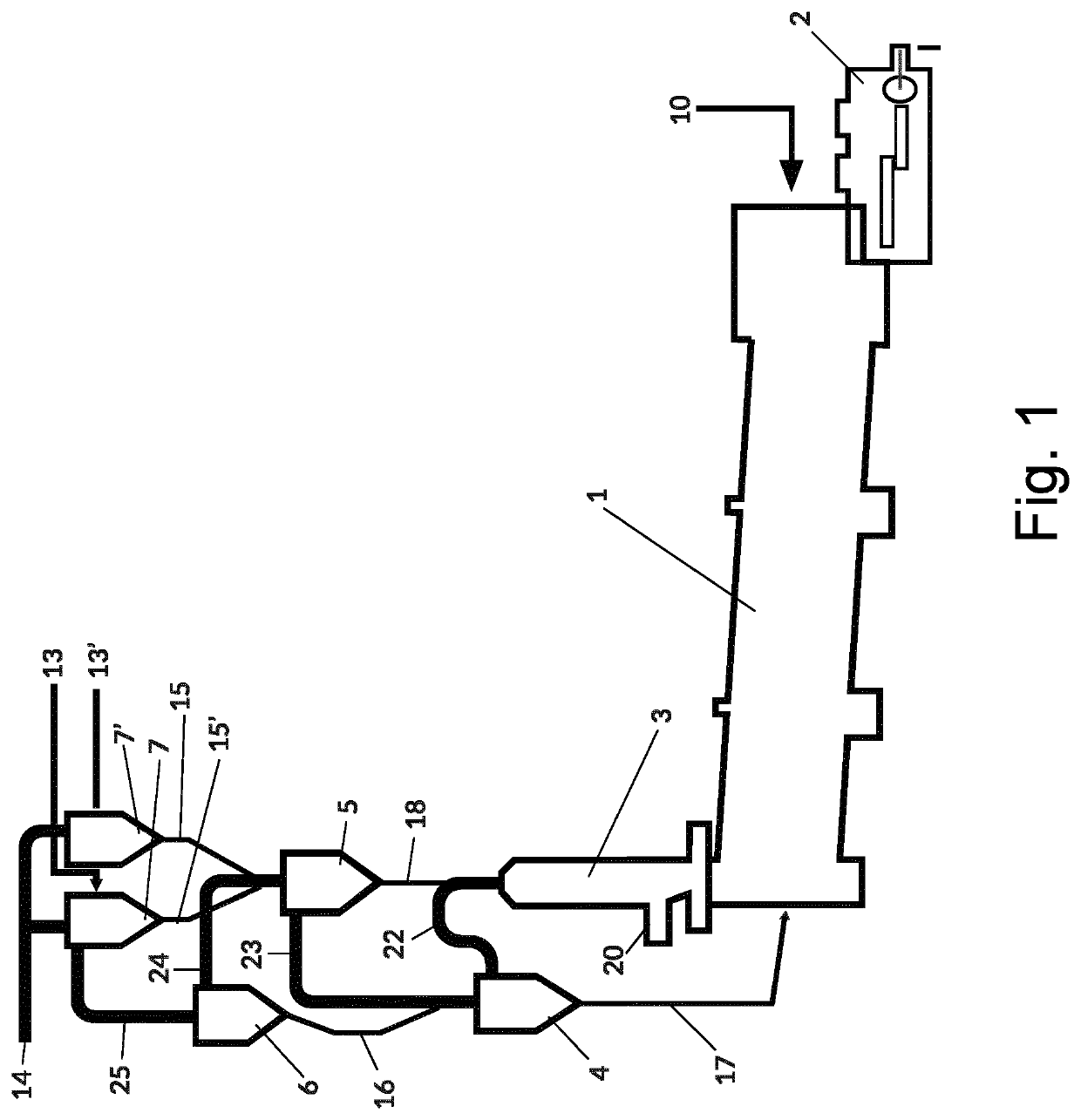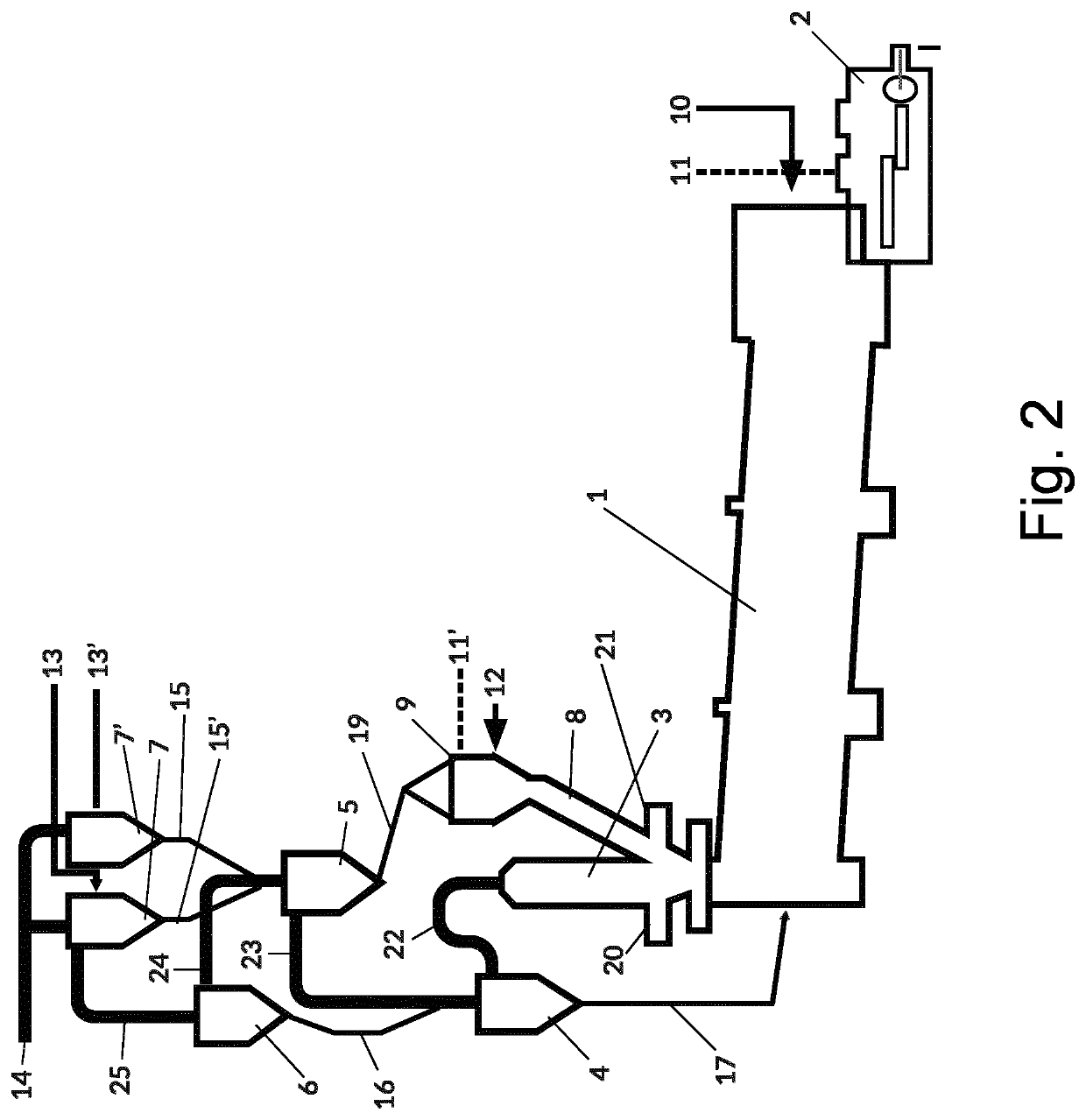Process for producing cement using a secondary fuel
a technology of cement and secondary fuel, applied in the field of cement manufacturing processes, can solve the problems of discoloration of cement, processing problems, and carbon monoxide damage, and achieve the effects of improving the chemical stability of cement, reducing the cost of cement production, and improving the chemical stability
- Summary
- Abstract
- Description
- Claims
- Application Information
AI Technical Summary
Benefits of technology
Problems solved by technology
Method used
Image
Examples
Embodiment Construction
Brief Description of the Figures
[0035]FIG. 1 is a schematic representation of a cement kiln without a pre-kiln combustion chamber, in which the process of the present invention can be performed.
[0036]FIG. 2 is a schematic representation of a cement kiln with a pre-kiln combustion chamber, in which the process of the present invention can be performed.
[0037]The invention provides a process for the production of cement, wherein heat is provided to a cement manufacturing process using a secondary fuel, wherein the secondary fuel comprises cellulose and plastic and is in the form of pellets of a size between about 3-25 mm thickness, having a calorific value of about 16 GJ / ton or more, and wherein said secondary fuel is supplied at a place between the cement inlet of the kiln and the first cyclone, whereafter cement clinker is produced in a cement kiln, and the cement clinker is cooled and milled to cement powder.
[0038]As explained, preferably, said secondary fuel is supplied to the rise...
PUM
| Property | Measurement | Unit |
|---|---|---|
| thickness | aaaaa | aaaaa |
| thickness | aaaaa | aaaaa |
| calorific value | aaaaa | aaaaa |
Abstract
Description
Claims
Application Information
 Login to View More
Login to View More - R&D
- Intellectual Property
- Life Sciences
- Materials
- Tech Scout
- Unparalleled Data Quality
- Higher Quality Content
- 60% Fewer Hallucinations
Browse by: Latest US Patents, China's latest patents, Technical Efficacy Thesaurus, Application Domain, Technology Topic, Popular Technical Reports.
© 2025 PatSnap. All rights reserved.Legal|Privacy policy|Modern Slavery Act Transparency Statement|Sitemap|About US| Contact US: help@patsnap.com


